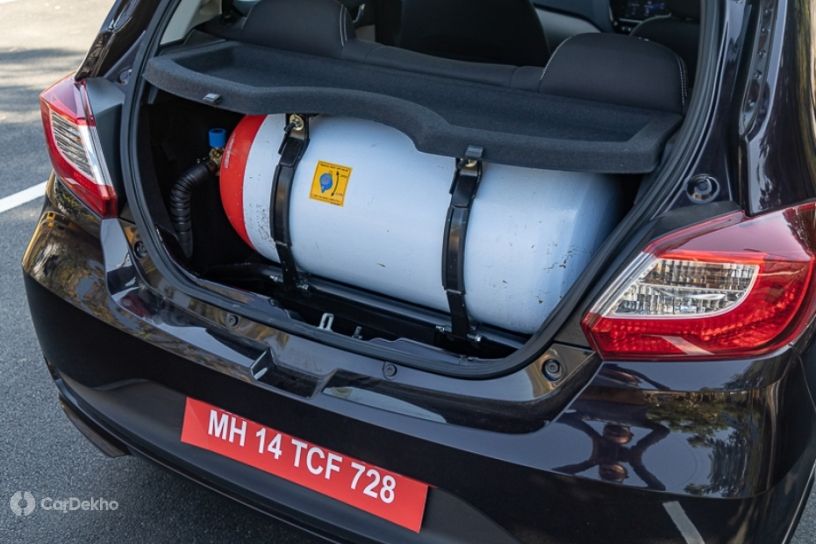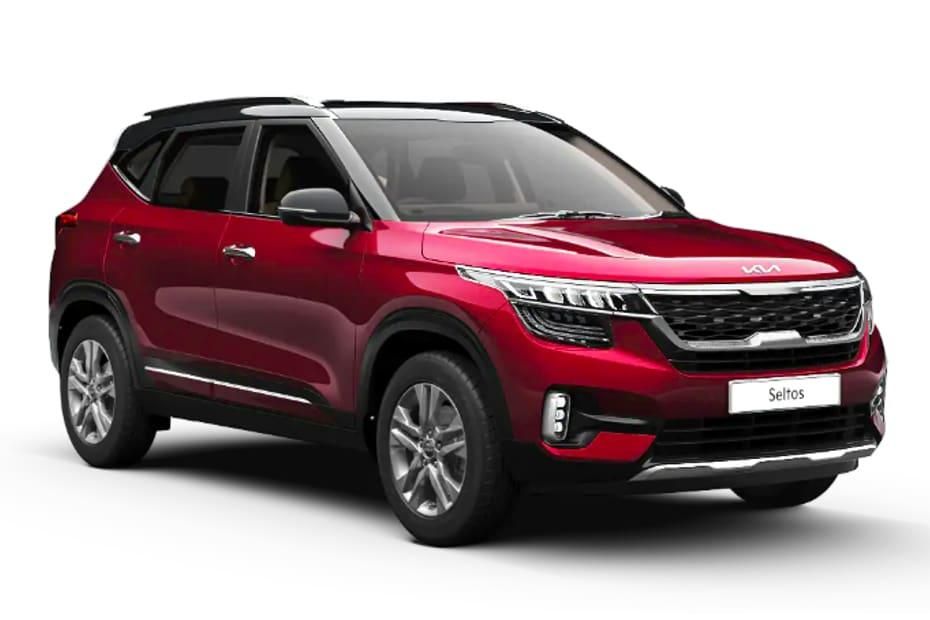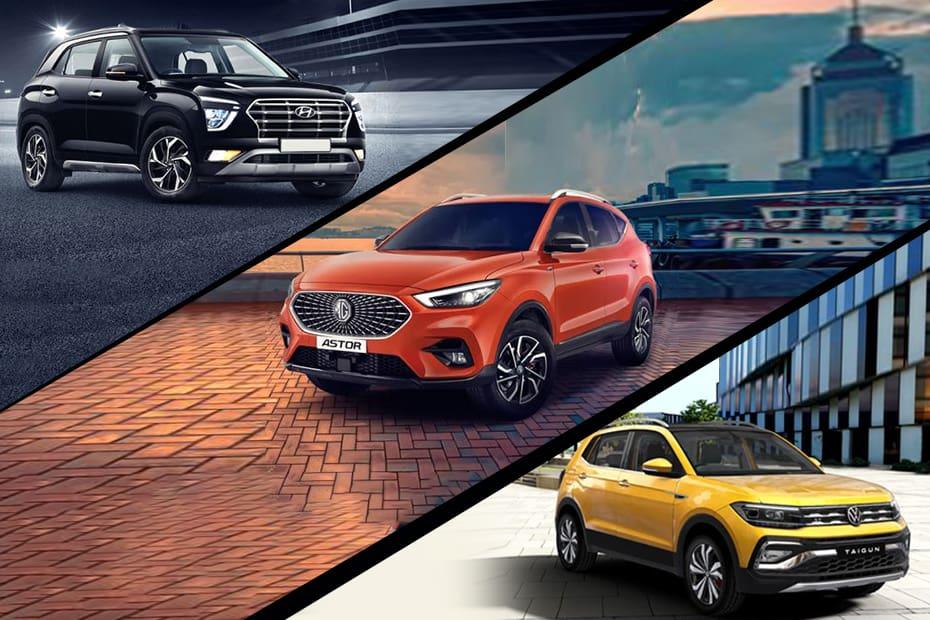Here’s Why An Aftermarket CNG Kit Is A Big NO Over A Factory-fitted Kit
Modified On Feb 05, 2022 01:34 PM By Tarun
- Write a comment
While an aftermarket kit seems like a viable option, there are some things you should know before going for one

CNG cars are the hype now, especially after Tata debuted the segment with the Tiago and Tigor. While there are just over 10 CNG cars on offer, it’s still a small number to choose from. There’s no CNG option on any SUV, premium hatchback, or compact sedan as of January 2022.
So, what do you do if your desired car falls in the above category and you prefer the cleaner fuel option? You either settle down without the CNG or just go for an aftermarket kit. This brings us to the big debate: Aftermarket vs Factory-fitted CNG Kits.
So here are some points that should help you take a better decision:
Differences
The CNG kits are paired up with a petrol engine. In case of a factory-fitted car, the engine is modified with certain components like specially designed valve seats, cylinder head mountings, and radiator.

After making all the required changes, the engine tuning is done as per the CNG kit in a factory fitted model. The throttle response and power and torque output are adjusted for a petrol engine, which will be further detuned (reduced) when running on CNG. Further tweaks are made to the suspension as well, which has to accommodate around 60kg more.
Once the CNG kit is fitted, the manufacturers test these cars for efficiency, performance, and most importantly, fire safety. After the said car passes these tests, it’s given a license in the form of a metal plate, which is usually installed under the bonnet or beside the CNG filling cap.
There are very few and easy differences between an aftermarket or a factory-fitted CNG car. A factory-fitted model has ‘CNG’ written inside a diamond-shaped inscription on the front and rear windscreen. The CNG filling cap (opening) is usually placed under the bonnet of an aftermarket-fitted car, but on a factory model, it's located inside the petrol filler cap. Another noticeable difference is that a factory model’s instrument cluster always has a CNG light/indicator.
Aftermarket Vs Factory-fitted - Pros And Cons

An aftermarket or retrofitted CNG kit is used by people who either have old cars or want to keep their desired car but petrol’s getting too costly for them. First rule, always getting a branded CNG kit from a reputable and authorised place.
Most CNG cars on the road run on sequential kits, as they are compatible with only fuel injected engines. A sequential kit uses a separate electronic control module (ECM), sensors, and gas injectors to control the flow and quantity of the CNG gas. No modifications are made to the structure and engineering. In case of a factory-fitted car, you get pre-installed dual ECMs, for petrol and CNG, respectively. The factory cars are tested across various terrains and climatic conditions.

Fitting an aftermarket CNG costs around Rs 40,000 to Rs 50,000 (60-litre capacity), which is much more affordable than a factory-fitted one. For instance, Hyundai, Maruti and Tata CNG cars demand around Rs 90,000 to a lakh over their corresponding petrol variants.
| Model |
Price difference between petrol and CNG |
| Tiago/Tigor |
Rs 90,000 |
| Grand i10 Nios CNG |
Rs 92,000 to Rs 1.08 lakh |
| Maruti Wagon R / Celerio / S-Presso / Ertiga / Alto 800 |
Rs 95,000 |

While we look at its plus side, there are some negatives too. While a sequential kit is compatible with all petrol-manual cars (and some petrol-automatic too), the engines are not tuned for that. The engines are purely designed for petrol, which will be converted to CNG usage. Whereas, a factory fitted car is already manufactured with the CNG settings.
As a result, the spark plugs, air filters, and radiators need to be constantly checked as they might prematurely start showing signs of wear and tear. CNG is a cooler gas (temperature wise), which requires more heat to burn, as a result, heating up the radiator even more.

Even the suspension setup is not tuned to carry the extra weight, which weakens the springs drastically. Overall, the life cycle of a car comes down with the aftermarket fitting. Most owners start complaining about several engine performance and heating issues within 50,000 to 60,000 kilometres of running.
Also Read: Top 12 CNG Cars In India
Besides, in case the fitment isn’t done properly, it can be a serious fire hazard as well. There have been several incidents of cylinders bursting due to loose fitment, improper wiring, or heavy weight/pressure on the cylinder.

You can get a factory-fitted CNG car serviced at your regular workshop, but in case of an aftermarket fitment, you'll have to get the car and the cylinders serviced separately. Also, the registration papers and insurance policies will again need to be changed, since all the documents are for a petrol car. And mind you, getting an aftermarket CNG kit also voids the car's warranty.
More CNG Cars Incoming!

Manufacturers as well as customers are gradually shifting towards CNG cars. Those who have regular usage or travel long distances everyday prefer a CNG car. Maruti started the trend in 2010 with the SX4, Eeco, Wagon R, Alto, and Estilo. Now it has six CNG cars: Alto, S-Presso, Wagon R, Celerio, Eeco, and Ertiga. Maruti plans to introduce CNG in more cars, which could include the Swift, Baleno, Dzire, and Vitara Brezza.
Hyundai and Tata have also established themselves in the space, and both are planning for more models in the future. Tata’s Tiago and Tigor are the first set of CNG cars to start up on the gas rather than petrol.
The availability of CNG is still concentrated in metropolitan areas and some Tier-II cities. On the other hand, we also have the government encouraging more development in this segment. Government has recently issued a proposal to allow retro-fitted CNG kits on BS6 cars. Till now, only BS4 cars were allowed for the aftermarket kits.
8 out of 8 found this helpful















